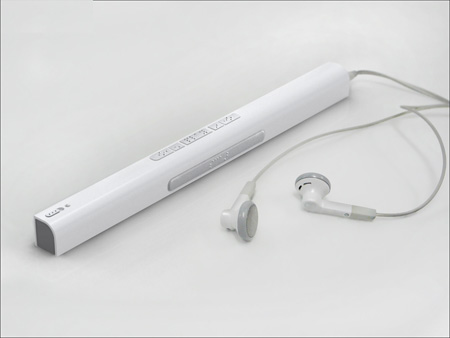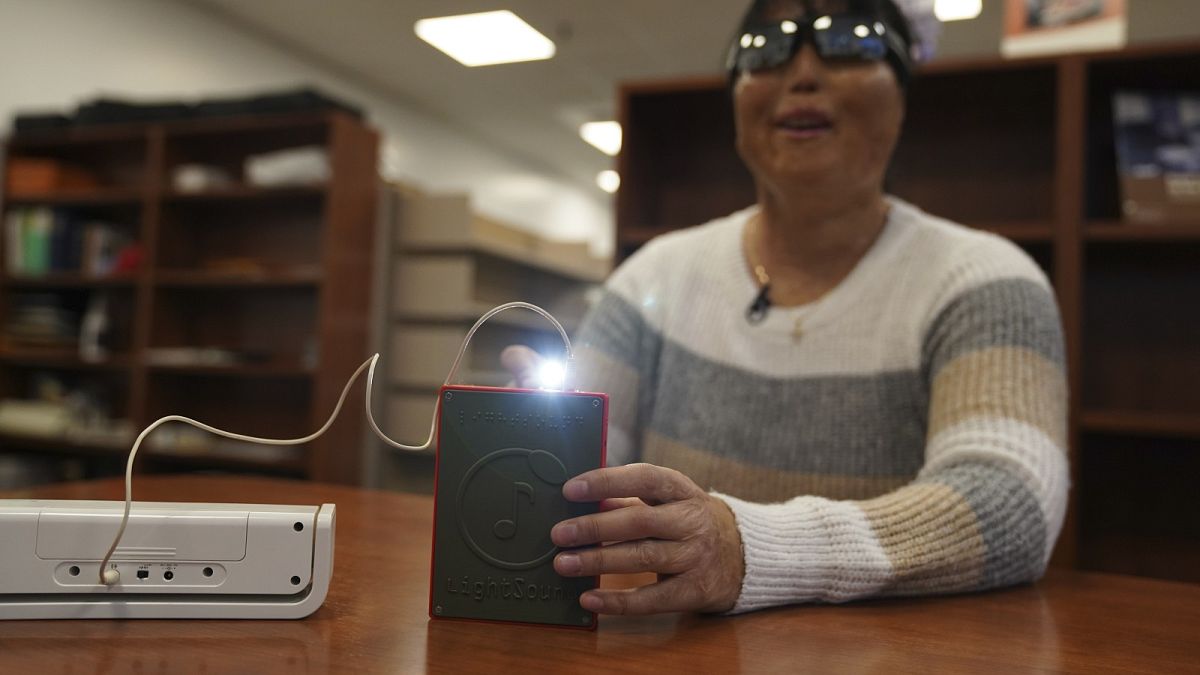OCR Devices for the Blind: Converting Print to Speech in Real-Time
OCR Devices for the Blind: Converting Print to Speech in Real-Time
Blog Article
Discover Cutting-edge Tools Designed for the Aesthetically Impaired
The growth of innovative tools for the aesthetically impaired stands for a substantial advancement in ease of access and independence. Technologies such as smart glasses with AI capacities and mobile applications designed to supply acoustic summaries are improving daily experiences for individuals.
Smart Glasses for Navigating

Smart glasses designed for navigation are changing the means visually damaged people engage with their atmosphere. These innovative tools utilize a mix of electronic camera technology, expert system, and acoustic responses to give real-time info concerning surroundings. By employing challenge detection systems, wise glasses can alert customers to possible dangers, enabling safer flexibility in both acquainted and unknown setups.
The combination of GPS modern technology even more enhances navigation abilities, permitting individuals to obtain acoustic instructions as they move. This hands-free strategy not just cultivates self-reliance however additionally empowers visually damaged individuals to browse metropolitan landscapes with raised self-confidence. Furthermore, many smart glasses are furnished with attributes that determine spots and street indications, providing contextual information that enhances the user experience.
In addition, the development of these devices is continually advancing, with firms working to improve the accuracy of item recognition and broaden the variety of navigational attributes. As wise glasses end up being more available and budget-friendly, they hold the possible to substantially transform day-to-day life for visually damaged users. Eventually, these cutting-edge tools represent an important step toward inclusivity, offering improved flexibility and a better sense of freedom for individuals browsing the globe around them.

Mobile Apps for Daily Living
How can mobile applications boost the lives of aesthetically impaired individuals? Mobile applications are changing the way visually impaired users navigate their environments, manage day-to-day tasks, and access info. These applications give vital assistance via numerous capabilities, promoting self-reliance and enhancing lifestyle.
Numerous cutting-edge mobile apps are developed particularly for day-to-day living. For example, apps like Be My Eyes connect aesthetically damaged users with sighted volunteers by means of video telephone calls, allowing them to get real-time help with tasks such as checking out labels or navigating strange areas. Similarly, Seeing AI, established by Microsoft, makes use of expert system to define surroundings, reviewed message, and recognize things, effectively transforming a smartphone into an effective device for day-to-day support.
In addition, navigating applications tailored for the aesthetically impaired, such as Aira and BlindSquare, offer audio-based directions and ecological info, enabling users to traverse their surroundings safely and confidently. Past navigating and immediate aid, mobile apps also support company and task administration, with functions that aid individuals set pointers, develop order of business, and track visits. In summary, mobile applications act as crucial sources, equipping visually damaged people to lead more independent and fulfilling lives.
Wearable Technologies for Assistance
Empowerment through modern technology is progressively noticeable in the world of wearable tools made to assist aesthetically damaged individuals. These ingenious devices integrate perfectly right into day-to-day live, boosting navigation and supplying crucial responses to customers. Wise glasses geared up with cameras can check out and identify faces message out loud, permitting users to communicate even more confidently in professional and social settings.
Another noteworthy improvement is the use of haptic comments systems in wearable devices. These systems utilize resonances or other responsive signals to convey details regarding the customer's environment, such as obstacles or adjustments in terrain, boosting mobility and security. Wearable innovations also include wristbands that attach to mobile phones, signaling users to alerts with refined resonances, therefore boosting connection without reliance on visual hints.
As these technologies proceed to advance, they are not only enhancing independence for aesthetically damaged individuals yet likewise fostering a greater feeling of inclusion in society. By connecting the gap between difficulties faced in daily living and the capacity for freedom, wearable innovations work as crucial devices in the quest for equal rights and empowerment for those with visual problems.
Audio Summary Tools
Audio summary tools play an essential duty in boosting availability for aesthetically damaged individuals, providing them with the ability to engage with aesthetic media. Smart glasses for the visually impaired. These tools offer narrated summaries of essential visual elements in movies, tv shows, and live performances, ensuring that users can fully comprehend the context and emotions conveyed via view it now visuals
Sound summary can be integrated right into numerous platforms, consisting of streaming solutions, cinema screenings, and live theater. Numerous prominent streaming solutions currently consist of audio description as an availability function, allowing customers to pick it easily. Along with conventional media, specialized apps likewise exist, offering audio descriptions for art exhibitions, galleries, and various other cultural events.
The effectiveness of audio summary pivots on the skill of the storytellers, that need to convey aesthetic details succinctly without interfering with the original sound. Advancements in this area are likewise leading the way for even more individualized experiences, where customers can change the level of detail and pacing according to their choices.
Braille Innovations and Gadgets
Braille developments and gadgets have substantially transformed the method aesthetically damaged individuals connect with text and info. Modern improvements have actually led to the growth of flexible tools that enhance literacy and self-reliance among individuals.
In addition, portable Braille notetakers incorporate typical Braille input with modern-day functionalities, facilitating note-taking, scheduling, and paper modifying on the move. Assistive technology for the blind. These compact tools commonly feature text-to-speech capacities, connecting the space between Braille and acoustic information
Additionally, cutting-edge Braille printers have emerged, allowing individuals to produce Braille tags, records, and academic products successfully. This availability fosters better participation in specialist and academic atmospheres, inevitably advertising inclusivity.
Moreover, study right into smart Braille technologies proceeds to broaden. Gadgets that include from this source expert system are being checked out to provide real-time navigation support and contextual details, improving the user experience in diverse setups. In general, these innovations mirror a commitment to empowering visually damaged people via modern technology, guaranteeing they can quickly accessibility and involve with the world around them.

Final Thought
The advancement of cutting-edge tools for the aesthetically impaired considerably improves freedom and top quality of life. These technologies not only foster better inclusion yet also promote autonomy in daily activities, eventually adding to an extra fair and available culture for aesthetically damaged individuals.
As clever glasses end up being a lot more available and affordable, they hold the possible to significantly change day-to-day life for aesthetically damaged customers. Mobile applications are transforming the way visually impaired customers navigate their settings, take care of everyday jobs, and gain access to info. Applications like Be My Eyes link aesthetically impaired users with sighted volunteers by means of video clip phone calls, enabling them to get real-time aid with tasks such as checking out labels or browsing strange areas.In addition, navigating apps customized for the aesthetically damaged, such as Aira and BlindSquare, offer audio-based directions and environmental details, enabling users to traverse their surroundings safely and with confidence.The development of ingenious devices for the visually damaged dramatically enhances self-reliance and my response quality of life.
Report this page